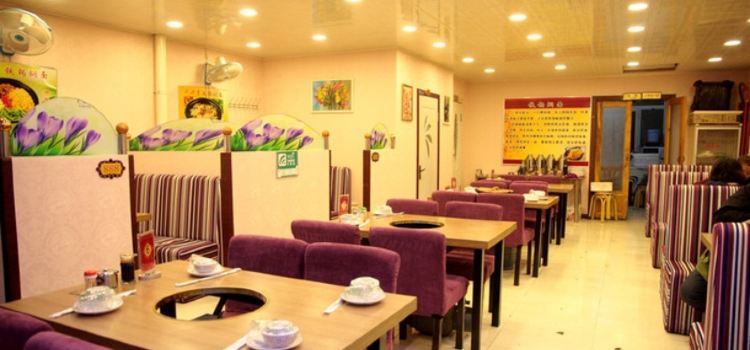口口香铁锅焖面
5/53 Reviews
AU$8

Open Now|09:00-22:00
0470-7373379
What travelers say:

It is the penultimate day of the nine-day self-driving trip to Hulunbuir. Because I want to go to Boktu and then return to Zhalantun, I chose to stop at Yakeshi and stay in a hotel for one night. I searched the Internet for nearby delicacies. I couldn't bear the appetite of eating mutton every day, so I chose this iron pot braised noodles - authentic Mongolian food. Because of the day's travel, the braised noodles were not cooked yet, and my sister and brother had finished all the cold dishes and two bottles of drinks. Hahaha, it was the first time to eat braised noodles, which was still very special. There was a strong broth flavor in the noodles, and the noodles were chewy. I tried braised noodles again the next day after returning to Tianjin. It was a successful manifestation of culture.
In the store, I read the origin of iron pot braised noodles, and finally posted the knowledge I sorted out for everyone to share.
Iron pot braised noodles are an innovative product of traditional noodles (soup noodles) in Shanxi, Inner Mongolia and other places. Its processing technology is braised. From the perspective of cooking technology, the braised noodles will not destroy the protein molecular network structure of the flour during the boiling process, so the braised noodles are more nutritious and taste better. Braised noodles originated in the Song Dynasty, originating in Shanxi, Hebei, western Inner Mongolia, Henan, Shaanxi and other places.
According to legend, in order to build the Great Wall during the Qin Dynasty, Chunkun Mountain stationed 100,000 troops of Meng Tian. Meng Tian was inspired when he inspected the surrounding villages and asked the soldiers to cook the food in one pot. "One pot stew" balanced the nutrition and enhanced the physical strength of the soldiers. Later, the civilians and soldiers recruited from all over the country brought this simple and delicious way of eating back to their hometowns. In the Song Dynasty, "one pot stew" began to spread widely among the people.
More
Reviews of 口口香铁锅焖面
Some reviews may have been translated by Google Translate
5/5Outstanding
All (3)
Latest
Photo reviews (1)
Positive reviews (1)
It is the penultimate day of the nine-day self-driving trip to Hulunbuir. Because I want to go to Boktu and then return to Zhalantun, I chose to stop at Yakeshi and stay in a hotel for one night. I searched the Internet for nearby delicacies. I couldn't bear the appetite of eating mutton every day, so I chose this iron pot braised noodles - authentic Mongolian food. Because of the day's travel, the braised noodles were not cooked yet, and my sister and brother had finished all the cold dishes and two bottles of drinks. Hahaha, it was the first time to eat braised noodles, which was still very special. There was a strong broth flavor in the noodles, and the noodles were chewy. I tried braised noodles again the next day after returning to Tianjin. It was a successful manifestation of culture. In the store, I read the origin of iron pot braised noodles, and finally posted the knowledge I sorted out for everyone to share. Iron pot braised noodles are an innovative product of traditional noodles (soup noodles) in Shanxi, Inner Mongolia and other places. Its processing technology is braised. From the perspective of cooking technology, the braised noodles will not destroy the protein molecular network structure of the flour during the boiling process, so the braised noodles are more nutritious and taste better. Braised noodles originated in the Song Dynasty, originating in Shanxi, Hebei, western Inner Mongolia, Henan, Shaanxi and other places. According to legend, in order to build the Great Wall during the Qin Dynasty, Chunkun Mountain stationed 100,000 troops of Meng Tian. Meng Tian was inspired when he inspected the surrounding villages and asked the soldiers to cook the food in one pot. "One pot stew" balanced the nutrition and enhanced the physical strength of the soldiers. Later, the civilians and soldiers recruited from all over the country brought this simple and delicious way of eating back to their hometowns. In the Song Dynasty, "one pot stew" began to spread widely among the people.